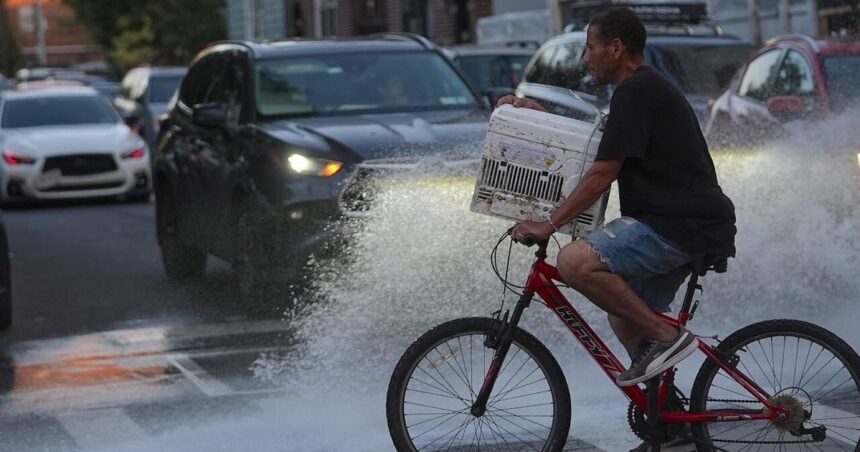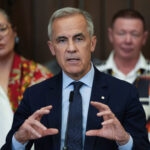The summer heat pressed down on the Fraser Valley as I drove toward a small community forum in Abbotsford. Sweat beaded along my hairline despite the car’s struggling air conditioner. The mercury had hit 37°C that afternoon—the third such day that week. Such temperatures would have been exceptional a decade ago. Now they’re becoming routine.
Inside the community center, I found Maria Cortez adjusting a portable fan, preparing for her presentation to a room of about thirty residents. Cortez, a veteran energy analyst with the BC Utilities Commission, had agreed to explain why their electricity bills had jumped nearly 12% over the past year.
“It’s not just inflation,” she told the gathering, pointing to a graph showing the correlation between extreme weather events and energy price hikes. “Climate change is creating a feedback loop in our energy systems that’s hitting everyone’s wallets.”
That feedback loop is the subject of a comprehensive new analysis from Columbia University’s Center on Global Energy Policy. The research confirms what many consumers have suspected: climate change isn’t just an environmental crisis—it’s becoming a significant driver of rising household energy costs across North America.
The study found that extreme weather events directly attributed to climate change have increased electricity prices by an average of 7-14% in climate-vulnerable regions over the past five years. From unprecedented heat waves straining cooling systems to polar vortex events requiring massive heating capacity, our energy infrastructure is buckling under conditions it wasn’t designed to withstand.
“We’re paying for climate change twice,” explains Dr. Karen Wu, the study’s lead author. “First through taxes for disaster response and infrastructure repairs, then through higher utility bills because the systems themselves are becoming more expensive to operate under these conditions.”
This reality was painfully evident last summer when rolling blackouts hit parts of British Columbia during a record heat dome. The province’s hydroelectric system—long considered climate-resilient—struggled as reservoir levels dropped from drought conditions while demand for cooling surged beyond capacity.
Back in Abbotsford, retired teacher James Morgan raised his hand. “I’ve lived here for forty years and my pension doesn’t stretch like it used to. My June bill was nearly double what I paid three years ago for the same month. How is this sustainable?”
It’s a question echoing across kitchen tables nationwide. Environment and Climate Change Canada estimates that climate-related infrastructure damage and adaptation costs will reach $15 billion annually by 2030. Much of this expense will inevitably be passed to consumers through higher utility rates.
Walking the shores of Cultus Lake the following day, I met Samantha Williams, a young mother watching her children splash in the shallows. The water level was visibly lower than normal, another symptom of changing climate patterns affecting regional hydropower capacity.
“We installed a heat pump last year,” Williams told me, adjusting her daughter’s sun hat. “The rebate helped, but it was still expensive. Though our winter bills are better now, summer cooling costs are way up with these heat waves. It feels like we can’t win.”
This cost-shifting experience isn’t unique to British Columbia. The Canadian Climate Institute reports that climate-driven weather events have already cost Canadian insurance companies over $2 billion annually, with personal energy expenditures rising at nearly double the rate of inflation in affected regions.
Traditional energy planning relies on historical weather patterns to predict demand and resource needs. Climate change has rendered many of these models obsolete. When Texas faced unprecedented cold in 2021, its independent energy grid collapsed, sending spot electricity prices soaring 10,000% and bankrupting several energy providers. The costs were ultimately absorbed by ratepayers.
“Our energy infrastructure was built for a climate that no longer exists,” notes Dr. Aisha Mohammed from the University of British Columbia’s Clean Energy Research Centre. “Retrofitting or rebuilding these systems for resilience requires massive investment, but waiting costs more in emergency responses and outages.”
What particularly troubles energy economists is how these rising costs disproportionately affect vulnerable populations. Statistics Canada data shows that low-income households already spend three times more of their total income on energy than wealthy ones. This energy poverty gap widens with each climate-driven price increase.
Indigenous communities often face the most severe impacts. In Northern Manitoba, where diesel generators still power many remote communities, fuel price volatility linked to climate disruptions has created precarious energy security. The Sayisi Dene First Nation reported spending 40% of their community budget on energy last year, compared to 25% a decade ago.
There are bright spots on this otherwise cloudy horizon. When I visited Vancouver’s Olympic Village neighborhood, I toured a district energy system that uses waste heat recovery to maintain remarkably stable energy costs despite climate fluctuations. The system serves as a model for climate-resilient community planning.
Provincial rebate programs for heat pumps, insulation upgrades, and residential solar installations have helped soften the blow for some households. The federal Greener Homes Initiative offers up to $5,000 for qualifying energy improvements. Yet demand far outstrips available funding, with waiting lists growing longer each month.
As I drove back to Vancouver, a wildfire smoke advisory flashed on highway signs. Another symptom of our changing climate that would soon have air purifiers running overtime in homes across the region, adding yet more to electricity bills.
“We’re in this transitional period where we’re paying for both the old system and the new one simultaneously,” Maria Cortez had explained at the community forum. “It’s painful, but necessary. The alternative—doing nothing—would ultimately cost far more.”
This transition represents the greatest energy challenge of our generation. How we respond will determine not just the environmental legacy we leave, but also whether ordinary families can afford to keep their lights on and their homes comfortable in the climate-altered world we now inhabit.






